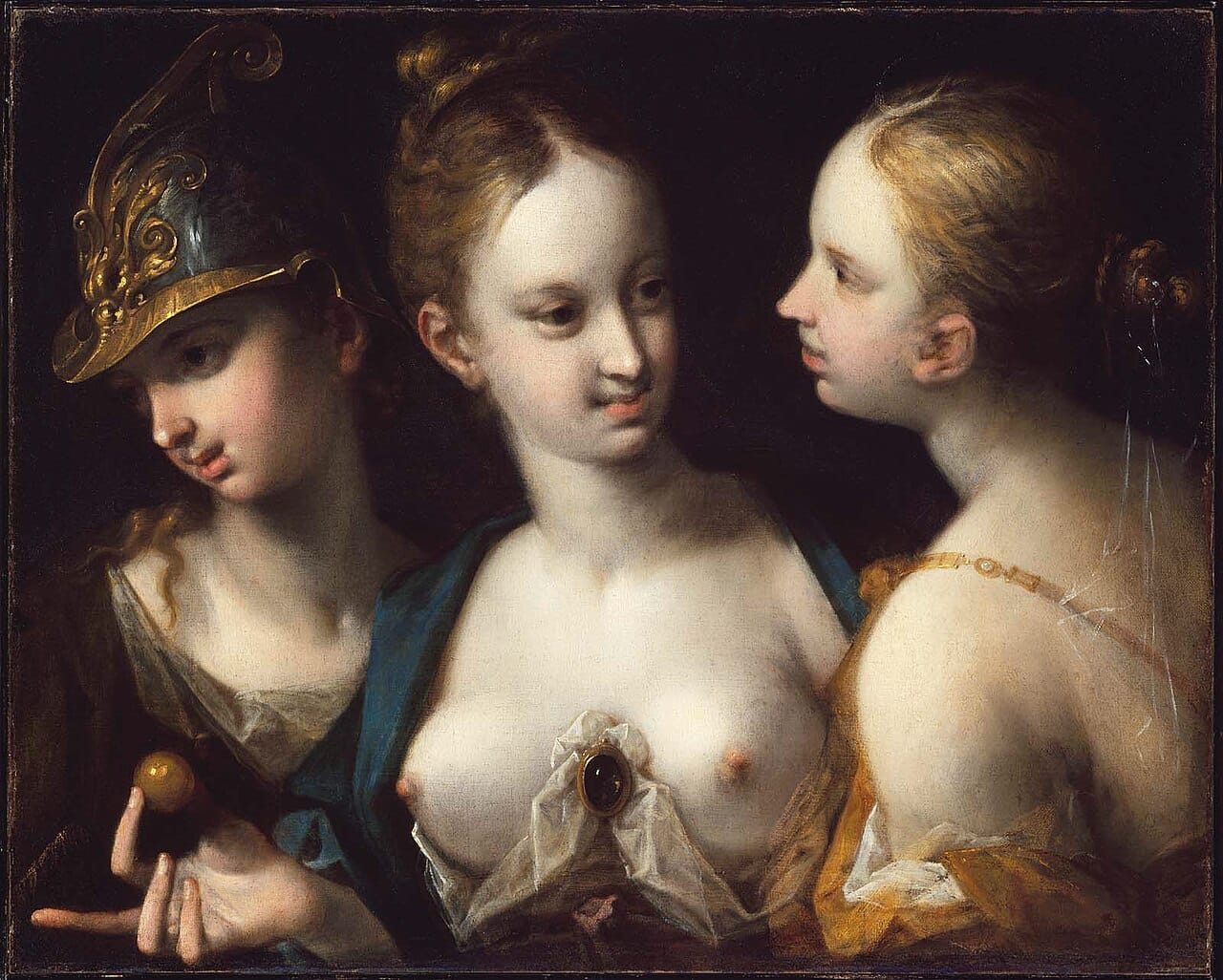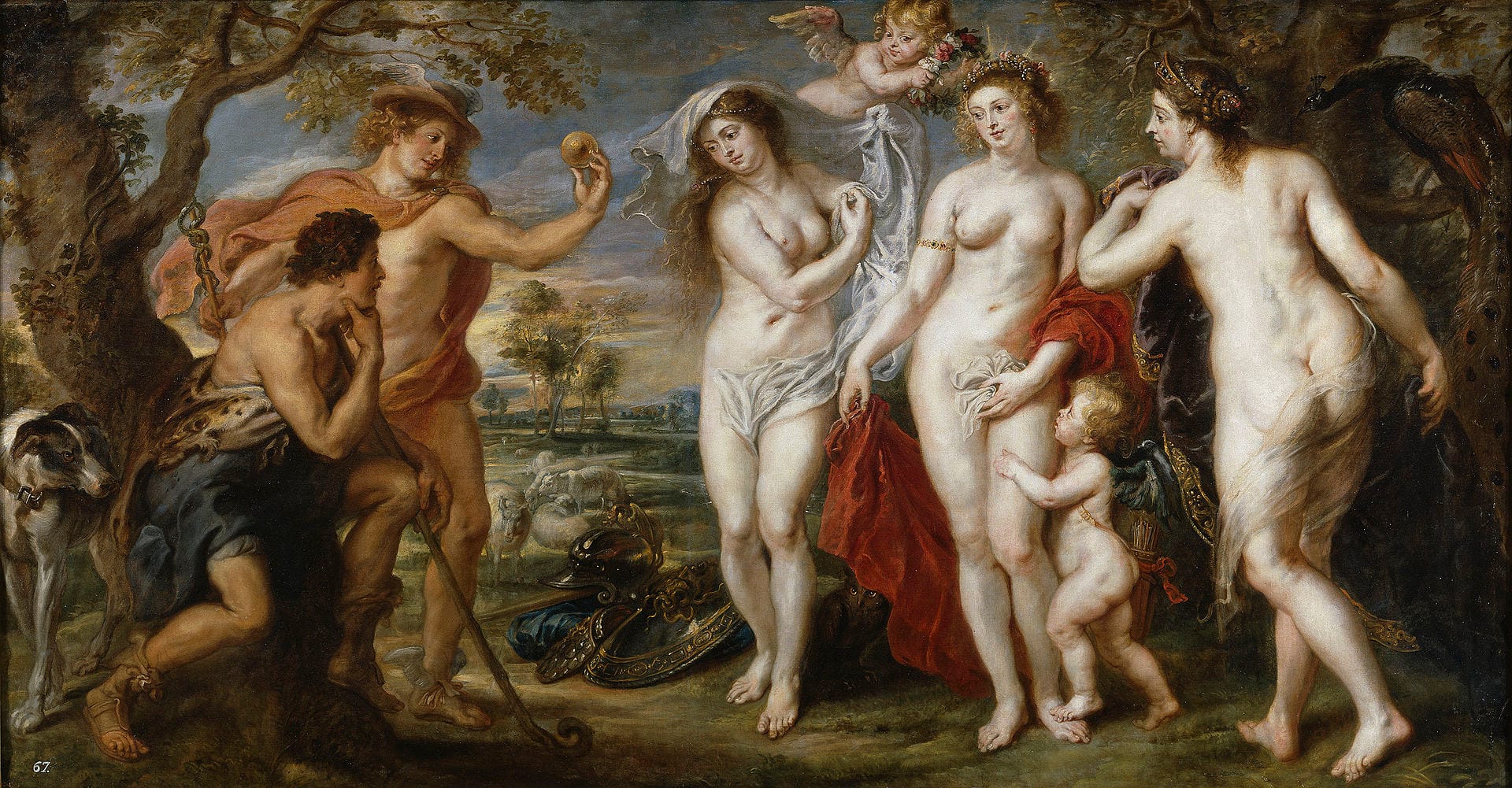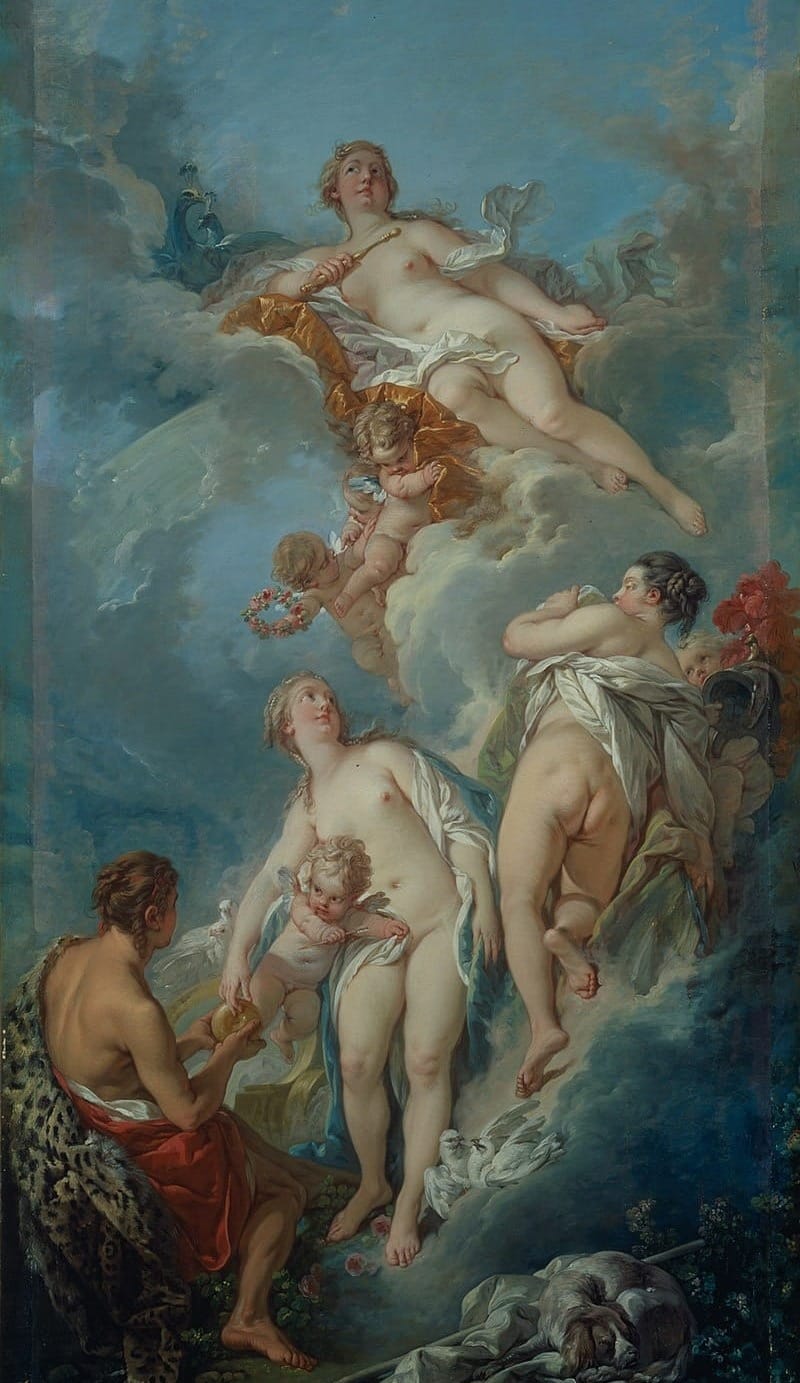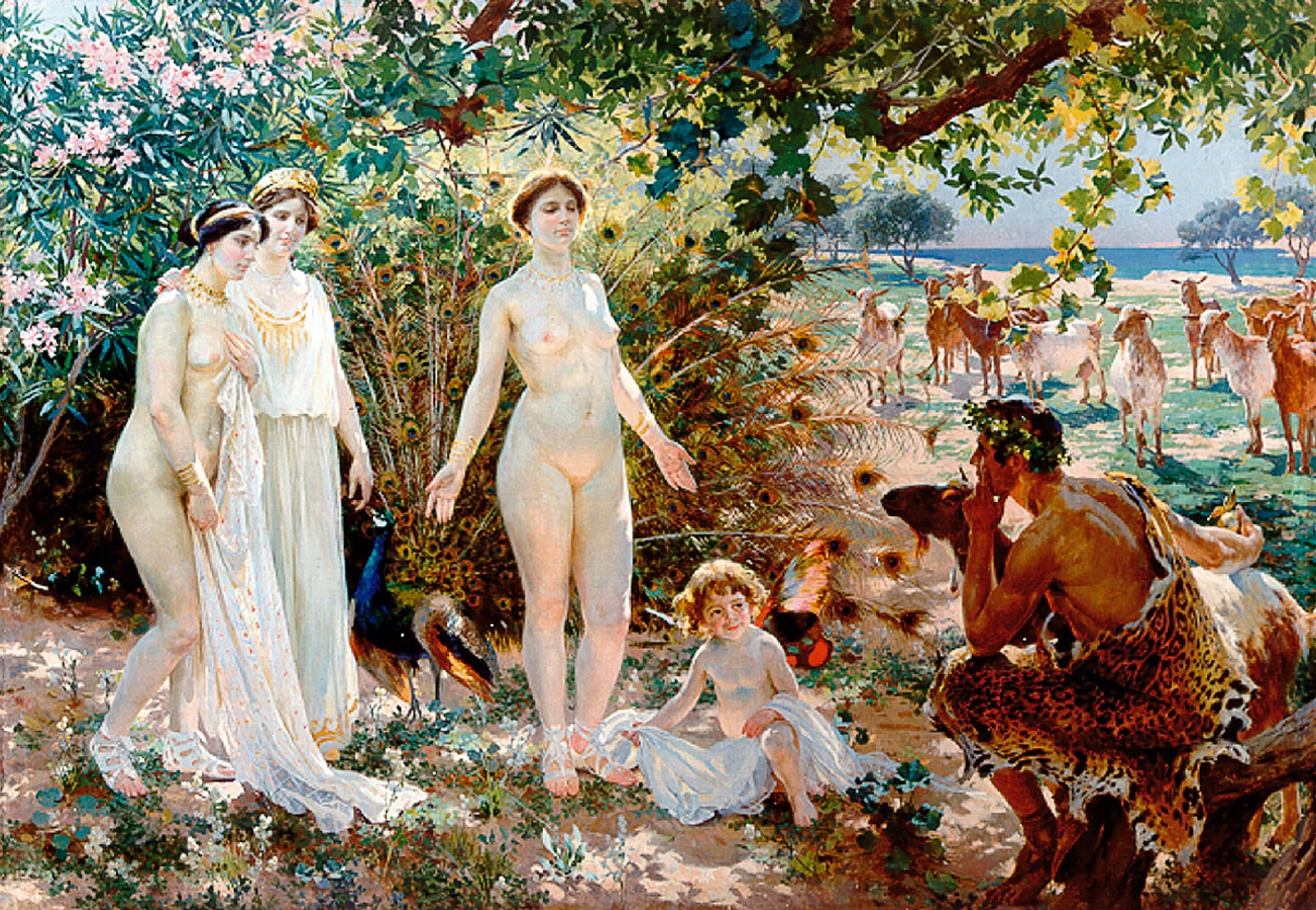'The Judgment of Paris' in famous paintings

Trojan prince Paris was asked to judge who was the most beautiful goddess in the heavens. He chose Aphrodite over Hera and Athena and was rewarded by her with the most beautiful woman in the world, Helen.
Except that she was already married. As was he. This set in motion the classic tale of slaughter known as Homer's Iliad. Helen’s enraged husband, Menelaus, led the Greek armies against Troy, sacking it and killing its inhabitants. Helen was returned home, the affair over. Most paintings, however, focus on the original choice offered to Paris. There are thousands of such paintings, so these are ones I find most unusual. For example, up top if Sandro Botticelli's version, from circa 1485–1488, where the goddesses are fully clothed.
For everyone else, nudity was the rule, especially for Venus. This is by Hans von Aachen's Pallas Athena, Venus and Juno (1593).

This is one of Rubens' many paintings on the subject, from 1638-39, where they are all nude.

In François Boucher, we appear to have lost gravitational force in this painting of 1754:

Finally, below is El juicio de Paris by Spanish painter, Enrique Simonet in 1904.

The idea of three choices or gifts has been a staple of literature ever since - three wishes, three musketeers, three oranges... It can be seen in Christian legends such as the Gifts of the Magi, where Three Wise Men come bearing gold, frankincense and myrrh in Matthew 2. The symbolism of their gifts is much debated but in terms of theology they work best as wealth, wisdom and immortality respectively.
